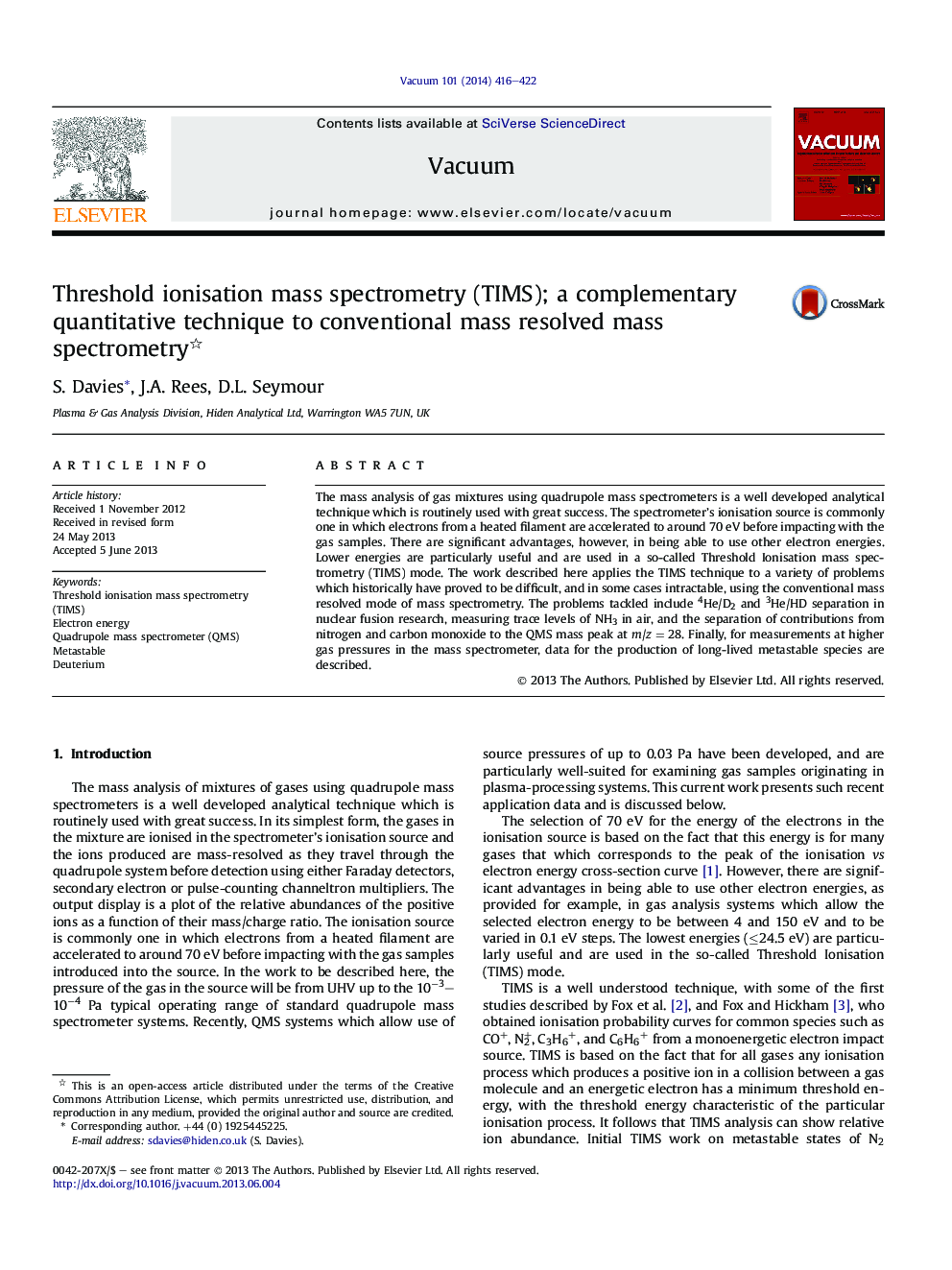| Article ID | Journal | Published Year | Pages | File Type |
|---|---|---|---|---|
| 8045278 | Vacuum | 2014 | 7 Pages |
Abstract
The mass analysis of gas mixtures using quadrupole mass spectrometers is a well developed analytical technique which is routinely used with great success. The spectrometer's ionisation source is commonly one in which electrons from a heated filament are accelerated to around 70 eV before impacting with the gas samples. There are significant advantages, however, in being able to use other electron energies. Lower energies are particularly useful and are used in a so-called Threshold Ionisation mass spectrometry (TIMS) mode. The work described here applies the TIMS technique to a variety of problems which historically have proved to be difficult, and in some cases intractable, using the conventional mass resolved mode of mass spectrometry. The problems tackled include 4He/D2 and 3He/HD separation in nuclear fusion research, measuring trace levels of NH3 in air, and the separation of contributions from nitrogen and carbon monoxide to the QMS mass peak at m/z = 28. Finally, for measurements at higher gas pressures in the mass spectrometer, data for the production of long-lived metastable species are described.
Keywords
Related Topics
Physical Sciences and Engineering
Materials Science
Surfaces, Coatings and Films
Authors
S. Davies, J.A. Rees, D.L. Seymour,
